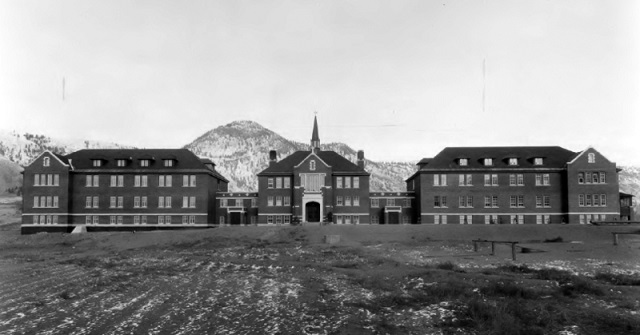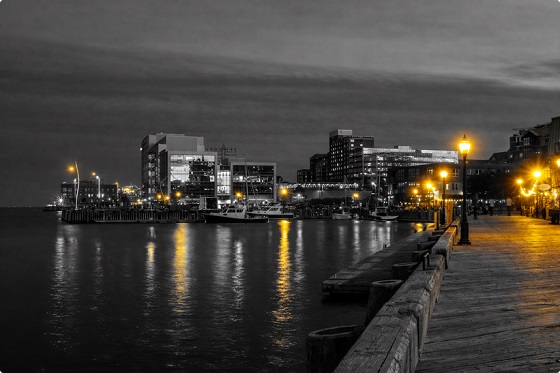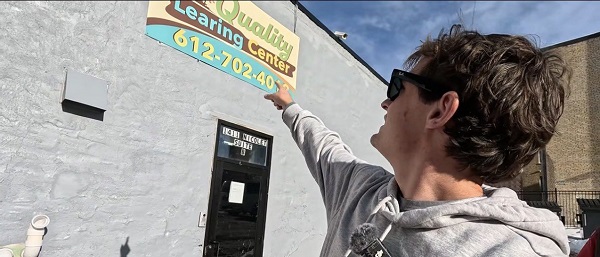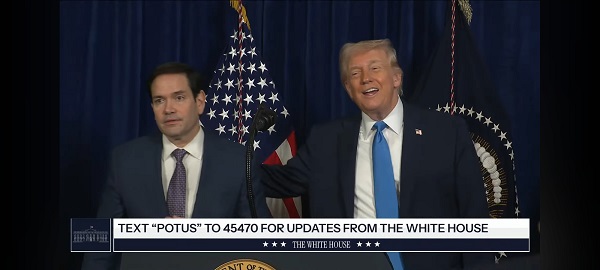Frontier Centre for Public Policy
Canada’s Indigenous burial hoax is still very much alive

From the Frontier Centre for Public Policy
The Kamloops “confirmation” – growing more inconclusive all the time – consisted solely of signs of sub-surface soil irregularities: GPR cannot detect human or other organic material, and is only reliable in finding graves in known cemeteries.
History shows that many hoaxes, fake news stories, and conspiracy theories have proven nearly unassailable, even when proven false. So far, it seems a British Columbia burial canard will be added to this list.
The assertion that thousands of Indian Residential School children are buried in unmarked graves across the country, many of them victims of genocide, has been bandied about for decades. Its current promotion skyrocketed in mid-2021 following an Indigenous media release that was heard around the world:
May 27, 2021, Kamloops – It is with a heavy heart that Tk’emlúps te Secwé pemc Kukpi7 (Chief) Rosanne Casimir confirms an unthinkable loss that was spoken about but never documented by the Kamloops Indian Residential School. This past weekend, with the help of a ground penetrating radar (GPR) specialist, the stark truth of the preliminary findings came to light – the confirmation of the remains of 215 children who were students of the Kamloops Indian Residential School.
Although this claim and others like it are slowly being exposed as false, most Canadians still believe them.
This assertion is one of the findings of a February 2024 Macdonald-Laurier Institute research report that found “by a 79 to 21 ratio, respondents believed that ‘215 Indigenous residential school children were buried in a mass grave on school grounds in Kamloops, BC,’” a story lacking factual or historical evidence “but which most media and virtually all politicians have been reluctant to contradict.”
The Kamloops Burial Hoax
The Kamloops “confirmation” – growing more inconclusive all the time – consisted solely of signs of sub-surface soil irregularities: GPR cannot detect human or other organic material, and is only reliable in finding graves in known cemeteries.
Still, immediately following the Kamloops announcement, there were angry vigils, public displays of grief and shame, solidarity speeches, promises to revolutionize society, and the burning down of dozens of predominantly Roman Catholic churches.
The furore attending the Kamloops discovery accelerated as later findings were announced in other provinces, with the number of purportedly identified graves soon exceeding 2,000. Frequently heard among activists was the cry that these announcements were proof of a hidden “Holocaust” or “Final Solution” perpetrated against Aboriginal students by Canadians working in residential schools. The Kamloops school was alleged to have been a “concentration camp” and the 2021 “burials” evidence that there had been a horrific crime.
Evidence Challenging the Hoax
Entrenched public opinion on what increasingly looks like a burial hoax was damaged on August 18, 2023, when the 14 closely spaced soil disturbances detected using GPR in the basement of the Roman Catholic church on the site of the former Pine Creek Residential School were found to contain animal bones and debris, not human remains.
These findings were preceded by several other inconclusive discoveries.
In August 2021, a team of researchers in Shubenacadie, Nova Scotia, conducted an excavation at the former Shubenacadie Residential School in search of clandestine burials, but to no avail. Two months later, a search was conducted for unmarked graves on the site of the former Camsell Indian Hospital in Edmonton. The facility treated Indigenous people, many of whom suffered from tuberculosis, and some Indigenous leaders claimed that the dig would uncover patients that had been buried there, but no such evidence was discovered.
One discovery still making headlines is the unearthing of child-sized skeletons in a reputed “mass grave,” most likely the result of repeated accidental excavation and haphazard reburial by community grave diggers in the community cemetery on Alberta’s Saddle Lake Cree Indian Reserve. Without a shred of evidence, community members have attributed the death of some of these children to murder at the hands of a school official that was never reported to the police.
That there are no missing or secretly buried students who attended the reserve’s Indian Residential School is proven by the absence of relatives in the past or present searching for loved ones who never returned home. By comparison, in all of Canada, only two distant relatives have been identified as looking for their ancestors. In both cases, the children’s death certificates were found “buried” in the provincial archives whose records showed they were buried correctly on their home reserves.
Two easily located students’ records are surely vastly different from the “15,000 to 25,000 … maybe even more” children Murray Sinclair, former Chair of the Truth and Reconciliation Commission of Canada, has claimed may be missing.
It is becoming increasingly clear that the Kamloops claim, and the many copycat allegations it fomented, are fallacious. More commentators are awaking to the “mass grave” propaganda, even though the Canadian mainstream media barely responded to the Pine Creek discovery of presumptive graves containing no human remains, an important reason this hoax is still very much alive.
Indigenous Elites Support the Hoax
Among the most prominent of many Indigenous perpetrators of these inflammatory claims of murder, mass graves, and even genocide has been RoseAnne Archibald, former National Chief of the Assembly of First Nations, Canada’s largest and best-known Indigenous lobbying group.
At a July 15, 2021, Kamloops Indian Band public presentation, Archibald maintained that the Kamloops case told the world “how 215 innocent children died and were buried in unmarked graves” and that this “crime against humanity” constituted “genocide.”
Completely ignoring the caution of all the known researchers conducting these band-sponsored GPR searches, Archibald added that “this ground penetrating technology is revealing evidence, undisputable proof, that crimes were committed.”
In an interview broadcast by the BBC on August 4, 2021, Archibald charged that Canada’s Indian Residential Schools were “designed to kill” Indigenous children. “And we are seeing proof of that,” she said. “1,600 children, innocent children, have been recovered so far…. We are going to be in the thousands upon tens of thousands of children found. I am not sure how you can say that the recovery of that many little children does not signify what it is – genocide.”
Chief Archibald failed to mention that not a single child’s body “has been recovered so far” or that three years later, no bodies have been exhumed.
A lack of verified evidence of children buried in unmarked graves, some supposedly after priests murdered them, has done nothing to deter the federal government from funding several lavish programmes meant to continue this effort. One of these initiatives was the August 10, 2021, announcement of the allocation of $321 million to help Indigenous communities search burial sites at former residential schools and to support survivors and their communities.
Such programmes have doubtless hardened the public opinion expressed in the Macdonald-Laurier Institute poll. Allied beliefs discovered by the study are also at work: 54 percent of all respondents consider the legacy of Indigenous colonialization to be a problem today; 55 percent vs. 45 percent believe that Indigenous peoples should have a unique status because they were here first; by 48 percent for to 41 percent against, Canadians believe the harm from Indigenous residential schools will continue rather than be resolved; and 19 percent of Canadians think children at residential schools were “purposefully killed” with another 39 percent saying that children also died of neglect.
But the most critical determinant of the exceptionally high belief in the “killing field” at the Kamloops residential school lies in “political culture in Canada,” according to the study: “Much seems to come down to the culturally left-liberal political culture in Canada. That is, the elite norms that hold sway in the media and among mainstream politicians are predominantly culturally leftist.”
As the report says: “It is well established that the media and politicians can cue the issues they want voters to focus on, making decisions to elevate some questions and ignore others.”
This obvious assertion allowed the Macdonald-Laurier Institute report to argue that:
Canadians’ relatively high trust in institutions and cultural elites grants considerable latitude to them to frame the issues that people talk about while neglecting other questions…. There is no better illustration of this than the Kamloops mass graves question, where the code of silence practiced by the media and mainstream political parties has resulted in a clear majority of the public believing this false account.
On the Indigenous side, the Kamloops discovery, and its promise of lots of money, quickly unleashed a flood of similar GPR searches across Canada. To date, the unmarked graves are presumed to hold the remains of mainly unknown and unaccounted for individuals, primarily children, at 26 sites that have been identified since 1974[RC1] .
The allocation of funds to search for graves was followed in June 2022 by appointing an investigator to work with Indigenous communities and the government to propose changes in federal laws, policies, and practices related to unmarked graves at residential schools.
Kimberly Murray, former Executive Director of the Truth and Reconciliation Commission of Canada, was given a two-year appointment as Canada’s “independent special interlocutor for missing children, unmarked graves, and burial sites associated with the Indian Residential Schools.”
Murray’s appointment was simply one part of a campaign, whether deliberately organized or not, to label Canada as a genocidal country long engaged in the systematic murder of Indigenous children whose remains were dumped into mass graves.
Attempts to Stop Hoax Challengers
On June 16, 2023, Murray released an interim report arguing “urgent consideration” should be given to legal mechanisms to combat what activists have termed “residential school denialism.”
Unsurprisingly, her “opening words” in the report stated:
… my role is to give voice to the children. It is not to be neutral or objective – it is to be a fierce and fearless advocate to ensure that the bodies and Spirits of the missing children are treated with the care, respect, and dignity that they deserve” even if that “conflicts with my responsibility to function independently and impartially, in a non-partisan and transparent way.
This attack on the fundamental precepts of objective search for truth based on reason, logic, and scientific evidence rooted in a scientific paradigm that clashes with Indigenous ways of knowing gave her leave to label genocide denial as an “attack” on her version of the truth whenever there were announcements of the discovery of possible unmarked graves.
Moral certainty based on Indigenous ways of knowing, not objective evidence based on science, allowed Kimberly Murray to state that the Canadian government has a role in combatting “denialism,” an inflammatory distortion of what is simply scientific scrutiny, by giving “urgent consideration” to the legal tools that already exist to address the problem, including civil and criminal sanctions.
“They have the evidence. The photos of burials. The records that prove that kids died. It is on their shoulders,” Murray told a crowd gathered on the Cowessess Indian Reserve in Saskatchewan on June 16, 2023.
But there is no photographic evidence of children buried beside the shuttered Kamloops Indian Residential School nor at any of the other former Indigenous schools in Canada.
The only photographic evidence shows typical church burials and thousands of schoolchildren engaged in everyday activities. As for the records, they reveal that the few residential school children who died at the schools were buried in school cemeteries beside school staff members or the nearest reserve cemetery. But most deceased children were interred on their home reserves. All of them received a proper Christian burial after they died, most succumbing to contagious diseases like tuberculosis over which Indigenous people had little natural immunity.
Several of those labelled denialists have argued that there are few missing students, only missing records about their school attendance and death. On March 21, 2023, Murray inadvertently confirmed this assertion in her testimony before the federal government’s Standing Senate Committee on Indigenous Peoples when she said:
The family doesn’t know where their loved one is buried. They were taken to a sanatorium, an Indian residential school. They were just told … that they died. I can get the name of that [missing] individual, I can log into the National Centre for Truth and Reconciliation, find the name of the student, find a record, which will lead me down to another record, which will lead me to Ancestry.com. Why are families having to go to my office to find the death certificate of their loved one on Ancestry.com when the provinces and territories won’t just provide those records?
And then those records will lead you to where they’re buried, hundreds of miles away from their home community. We are now seeing families going to cemeteries. I get this a lot. The children aren’t missing; they’re buried in the cemeteries. They’re missing because the families were never told where they’re buried. Every Indigenous family needs to know where their child is buried. When we find that, and we know that they’re going to have a little bit of closure now, they know the truth and they have some answers, that’s what keeps us going. [emphasis added].
Even though there is little evidence that thousands of children’s deaths were not reported to their parents, and lots of evidence that this is not true, including the refusal of the National Centre for Truth and Reconciliation to remove the names of children whose cause of death and place of burial have been found, from its Memorial Register, a list now totalling over 4,100 named and unnamed “children who never returned home from residential schools.”
Murray’s statement contradicts the established public narrative about missing children. None of these facts have ever been communicated to the public by the mainstream media.
The latest anti-denial effort emanated from the Canadian Senate Standing Committee on Indigenous Peoples, which released a 30-page report on July 19, 2023, titled “Honouring the Children Who Never Came Home: Truth, Education and Reconciliation.” The study recommends “that the Government of Canada take every action necessary to combat the rise of residential school denialism.”
According to lawyer John Carpay, president of the Justice Centre for Constitutional Freedoms:
The use of state resources to promote one opinion on a scientific or historical matter is nakedly totalitarian. Apart from that, the senators’ aggressive language calling on government to “take every action necessary” suggests that it would be okay for the government to punish the likes of Michelle Stirling, Mark DeWolf, and others who dare to disagree with the dominant narrative.
The report fails to define “denialism” yet claims it “serves to distract people from the horrific consequences of Residential Schools and the realities of missing children, burials, and unmarked graves.” This omission suggests that “denialism” means disagreeing with the dominant narrative that Indian Residential Schools were houses of horror marked by racism and genocide.
Decades of an Aboriginal blood libel assertions hang over all these claims, with an army of activists and their supporters acting as its eager propagandists. It is long past time to find the underlying cause of this fake news by exhuming the reputed unmarked graves and identifying any remains they might contain. If that never happens, Canadians will be paying vast amounts forever to keep this hoax about missing and murdered Indigenous children alive.
Hymie Rubenstein is editor of REAL Indigenous Report and a retired professor of anthropology, the University of Manitoba.
Business
Ottawa Is Still Dodging The China Interference Threat

From the Frontier Centre for Public Policy
By Lee Harding
Alarming claims out of P.E.I. point to deep foreign interference, and the federal government keeps stalling. Why?
Explosive new allegations of Chinese interference in Prince Edward Island show Canada’s institutions may already be compromised and Ottawa has been slow to respond.
The revelations came out in August in a book entitled “Canada Under Siege: How PEI Became a Forward Operating Base for the Chinese Communist Party.” It was co-authored by former national director of the RCMP’s proceeds of crime program Garry Clement, who conducted an investigation with CSIS intelligence officer Michel Juneau-Katsuya.
In a press conference in Ottawa on Oct. 8, Clement referred to millions of dollars in cash transactions, suspicious land transfers and a network of corporations that resembled organized crime structures. Taken together, these details point to a vulnerability in Canada’s immigration and financial systems that appears far deeper than most Canadians have been told.
P.E.I.’s Provincial Nominee Program allows provinces to recommend immigrants for permanent residence based on local economic needs. It seems the program was exploited by wealthy applicants linked to Beijing to gain permanent residence in exchange for investments that often never materialized. It was all part of “money laundering, corruption, and elite capture at the highest levels.”
Hundreds of thousands of dollars came in crisp hundred-dollar bills on given weekends, amounting to millions over time. A monastery called Blessed Wisdom had set up a network of “corporations, land transfers, land flips, and citizens being paid under the table, cash for residences and property,” as was often done by organized crime.
Clement even called the Chinese government “the largest transnational organized crime group in the history of the world.” If true, the allegation raises an obvious question: how much of this activity has gone unnoticed or unchallenged by Canadian authorities, and why?
Dean Baxendale, CEO of the China Democracy Fund and Optimum Publishing International, published the book after five years of investigations.
“We followed the money, we followed the networks, and we followed the silence,” Baxendale said. “What we found were clear signs of elite capture, failed oversight and infiltration of Canadian institutions and political parties at the municipal, provincial and federal levels by actors aligned with the Chinese Communist Party’s United Front Work Department, the Ministry of State Security. In some cases, political donations have come from members of organized crime groups in our country and have certainly influenced political decision making over the years.”
For readers unfamiliar with them, the United Front Work Department is a Chinese Communist Party organization responsible for influence operations abroad, while the Ministry of State Security is China’s main civilian intelligence agency. Their involvement underscores the gravity of the allegations.
It is a troubling picture. Perhaps the reason Canada seems less and less like a democracy is that it has been compromised by foreign actors. And that same compromise appears to be hindering concrete actions in response.
One example Baxendale highlighted involved a PEI hotel. “We explore how a PEI hotel housed over 500 Chinese nationals, all allegedly trying to reclaim their $25,000 residency deposits, but who used a single hotel as their home address. The owner was charged by the CBSA, only to have the trial shut down by the federal government itself,” he said. The case became a key test of whether Canadian authorities were willing to pursue foreign interference through the courts.
The press conference came 476 days after Bill C-70 was passed to address foreign interference. The bill included the creation of Canada’s first foreign agent registry. Former MP Kevin Vuong rightly asked why the registry had not been authorized by cabinet. The delay raises doubts about Ottawa’s willingness to confront the problem directly.
“Why? What’s the reason for the delay?” Vuong asked.
Macdonald-Laurier Institute foreign policy director Christopher Coates called the revelations “beyond concerning” and warned, “The failures to adequately address our national security challenges threaten Canada’s relations with allies, impacting economic security and national prosperity.”
Former solicitor general of Canada and Prince Edward Island MP Wayne Easter called for a national inquiry into Beijing’s interference operations.
“There’s only one real way to get to the bottom of what is happening, and that would be a federal public inquiry,” Easter said. “We need a federal public inquiry that can subpoena witnesses, can trace bank accounts, can bring in people internationally, to get to the bottom of this issue.”
Baxendale called for “transparency, national scrutiny, and most of all for Canadians to wake up to the subtle siege under way.” This includes implementing a foreign influence transparency commissioner and a federal registry of beneficial owners.
If corruption runs as deeply as alleged, who will have the political will to properly respond? It will take more whistleblowers, changes in government and an insistent public to bring accountability. Without sustained pressure, the system that allowed these failures may also prevent their correction.
Lee Harding is a research fellow for the Frontier Centre for Public Policy.
Frontier Centre for Public Policy
Tent Cities Were Rare Five Years Ago. Now They’re Everywhere

From the Frontier Centre for Public Policy
Canada’s homelessness crisis has intensified dramatically, with about 60,000 people homeless this Christmas and chronic homelessness becoming entrenched as shelters overflow and encampments spread. Policy failures in immigration, housing, monetary policy, shelters, harm reduction, and Indigenous governance have driven the crisis. Only reversing these policies can meaningfully address it.
Encampments that were meant to be temporary have become a permanent feature in our communities
As Canadians settle in for the holiday season, 60,000 people across this country will spend Christmas night in a tent, a doorway, or a shelter bed intended to be temporary. Some will have been there for months, perhaps years. The number has quadrupled in six years.
In October 2024, enumerators in 74 Canadian communities conducted the most comprehensive count of homelessness this country has attempted. They found 17,088 people sleeping without shelter on a single autumn night, and 4,982 of them living in encampments. The count excluded Quebec entirely. The real number is certainly higher.
In Ontario alone, homelessness increased 51 per cent between 2016 and 2024. Chronic homelessness has tripled. For the first time, more than half of all homelessness in that province is chronic. People are no longer moving through the system. They are becoming permanent fixtures within it.
Toronto’s homeless population more than doubled between April 2021 and October 2024, from 7,300 to 15,418. Tents now appear in places that were never seen a decade ago. The city has 9,594 people using its shelter system on any given night, yet 158 are turned away each evening because no beds are available.
Calgary recorded 436 homeless deaths in 2023, nearly double the previous year. The Ontario report projects that without significant policy changes, between 165,000 and 294,000 people could experience homelessness annually in that province alone by 2035.
The federal government announced in September 2024 that it would allocate $250 million over two years to address encampments. Ontario received $88 million for ten municipalities. The Association of Municipalities of Ontario calculated that ending chronic homelessness in their province would require $11 billion over ten years. The federal contribution represents less than one per cent of what is needed.
Yet the same federal government found $50 billion for automotive subsidies and battery plants. They borrow tonnes of money to help foreign car manufacturers with EVs, while tens of thousands are homeless. But money alone does not solve problems. Pouring billions into a bureaucratic system that has failed spectacularly without addressing the policies that created the crisis would be useless.
Five years ago, tent cities were virtually unknown in most Canadian communities. Recent policy choices fuelled it, and different choices can help unmake it.
Start with immigration policy. The federal government increased annual targets to over 500,000 without ensuring housing capacity existed. Between 2021 and 2024, refugees and asylum seekers experiencing chronic homelessness increased by 475 per cent. These are people invited to Canada under federal policy, then abandoned to municipal shelter systems already at capacity.
Then there is monetary policy. Pandemic spending drove inflation, which made housing unaffordable. Housing supply remains constrained by policy. Development charges, zoning restrictions, and approval processes spanning years prevent construction at the required scale. Municipal governments layer fees onto new developments, making projects uneconomical.
Shelter policy itself has become counterproductive. The average shelter stay increased from 39 days in 2015 to 56 days in 2022. There are no time limits, no requirements, no expectations. Meanwhile, restrictive rules around curfews, visitors, and pets drive 85 per cent of homeless people to avoid shelters entirely, preferring tents to institutional control.
The expansion of harm reduction programs has substituted enabling for treatment. Safe supply initiatives provide drugs to addicts without requiring participation in recovery programs. Sixty-one per cent cite substance use issues, yet the policy response is to make drug use safer rather than to make sobriety achievable. Treatment programs with accountability would serve dignity far better than an endless supply of free drugs.
Indigenous people account for 44.6 per cent of those experiencing chronic homelessness in Northern Ontario despite comprising less than three per cent of the general population. This overrepresentation is exacerbated by policies that fail to recognize Indigenous governance and self-determination as essential. Billions allocated to Indigenous communities are never scrutinized.
The question Canadians might ask this winter is whether charity can substitute for competent policy. The answer is empirically clear: it cannot. What is required before any meaningful solutions is a reversal of the policies that broke it.
Marco Navarro-Genie is vice-president of research at the Frontier Centre for Public Policy and co-author with Barry Cooper of Canada’s COVID: The Story of a Pandemic Moral Panic (2023).
-

 International2 days ago
International2 days ago“Captured and flown out”: Trump announces dramatic capture of Maduro
-

 International2 days ago
International2 days agoTrump Says U.S. Strike Captured Nicolás Maduro and Wife Cilia Flores; Bondi Says Couple Possessed Machine Guns
-

 Energy2 days ago
Energy2 days agoThe U.S. Just Removed a Dictator and Canada is Collateral Damage
-

 International2 days ago
International2 days agoUS Justice Department Accusing Maduro’s Inner Circle of a Narco-State Conspiracy
-

 Business2 days ago
Business2 days agoVacant Somali Daycares In Viral Videos Are Also Linked To $300 Million ‘Feeding Our Future’ Fraud
-

 Haultain Research1 day ago
Haultain Research1 day agoTrying to Defend Maduro’s Legitimacy
-

 International2 days ago
International2 days agoU.S. Claims Western Hemispheric Domination, Denies Russia Security Interests On Its Own Border
-

 Daily Caller1 day ago
Daily Caller1 day agoTrump Says US Going To Run Venezuela After Nabbing Maduro



